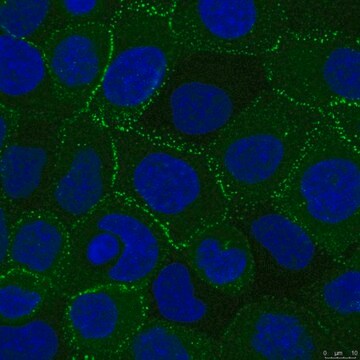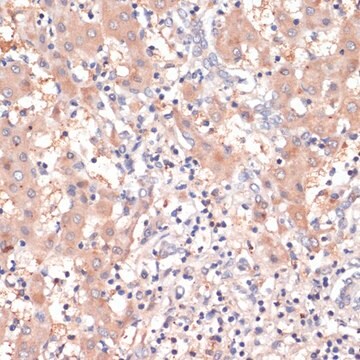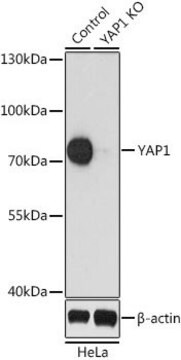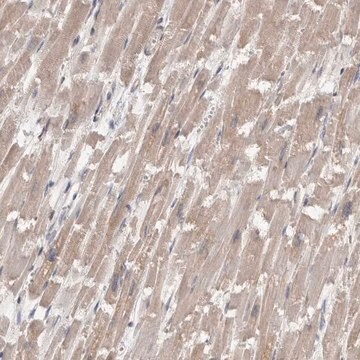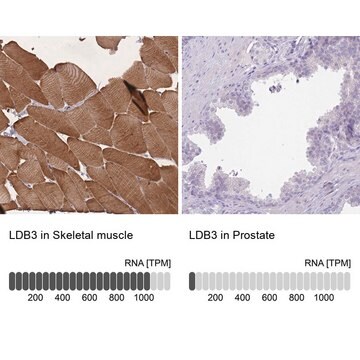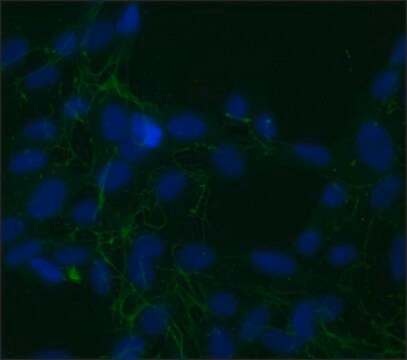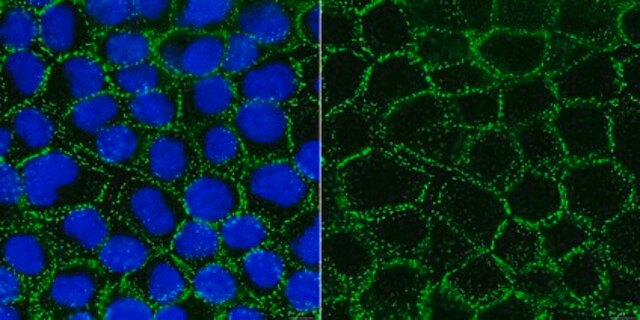CBL173
Anti-Desmoplakin 1& 2 Antibody, clone DP2.15
clone DP2.15, Chemicon®, from mouse
Synonim(y):
Anti-DCWHKTA, Anti-DP
About This Item
Polecane produkty
pochodzenie biologiczne
mouse
Poziom jakości
forma przeciwciała
purified antibody
rodzaj przeciwciała
primary antibodies
klon
DP2.15, monoclonal
reaktywność gatunkowa
bovine, human, chicken, rat, mouse
producent / nazwa handlowa
Chemicon®
metody
immunocytochemistry: suitable
immunofluorescence: suitable
western blot: suitable
izotyp
IgG1
numer dostępu NCBI
numer dostępu UniProt
Warunki transportu
wet ice
docelowa modyfikacja potranslacyjna
unmodified
informacje o genach
human ... DSP(1832)
Specyficzność
Immunogen
Zastosowanie
Cell Structure
Cytoskeleton
Immunohistochemistry: 1:10; Frozen tissue
Immunofluorescence
Optimal working dilutions must be determined by the end user.
Postać fizyczna
azide, 0.5% BSA in PBS buffer, pH 7.4
Przechowywanie i stabilność
Informacje prawne
Oświadczenie o zrzeczeniu się odpowiedzialności
Not finding the right product?
Try our Narzędzie selektora produktów.
Kod klasy składowania
12 - Non Combustible Liquids
Klasa zagrożenia wodnego (WGK)
WGK 2
Temperatura zapłonu (°F)
Not applicable
Temperatura zapłonu (°C)
Not applicable
Certyfikaty analizy (CoA)
Poszukaj Certyfikaty analizy (CoA), wpisując numer partii/serii produktów. Numery serii i partii można znaleźć na etykiecie produktu po słowach „seria” lub „partia”.
Masz już ten produkt?
Dokumenty związane z niedawno zakupionymi produktami zostały zamieszczone w Bibliotece dokumentów.
Nasz zespół naukowców ma doświadczenie we wszystkich obszarach badań, w tym w naukach przyrodniczych, materiałoznawstwie, syntezie chemicznej, chromatografii, analityce i wielu innych dziedzinach.
Skontaktuj się z zespołem ds. pomocy technicznej